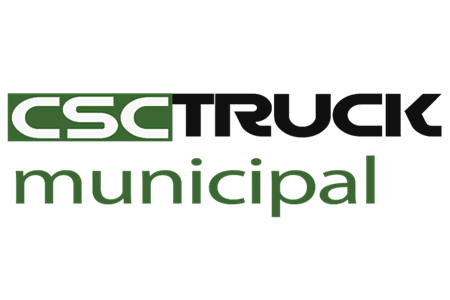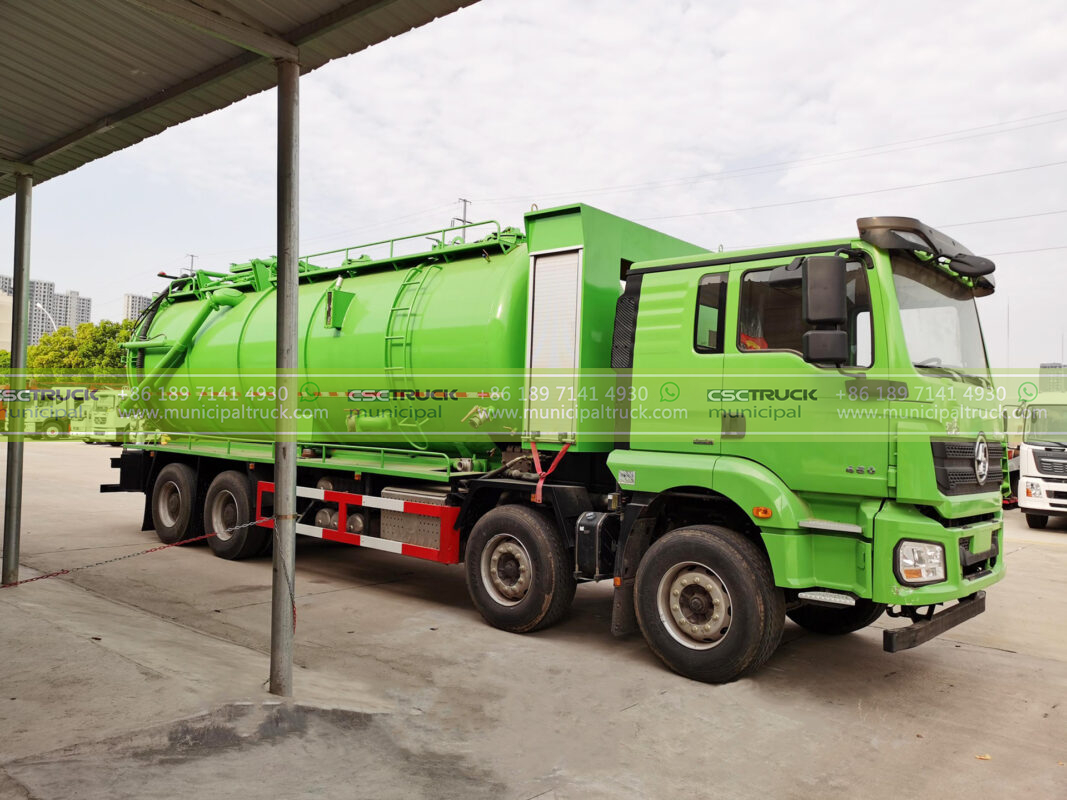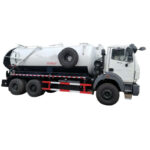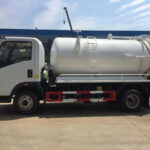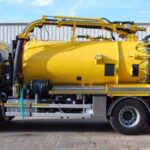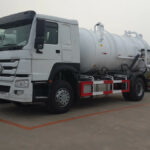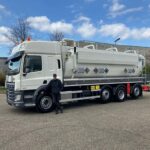Introduction: The High-Stakes World of Wastewater Warriors
Sludge collector trucks—whether designated as sewer trucks, vacuum trucks, or municipal trucks—operate in one of the most punishing environments imaginable: submerged in corrosive sewage, handling abrasive solids, and enduring relentless mechanical stress. These critical assets represent major capital investments for municipalities and contractors, where premature failure isn’t merely an inconvenience; it’s a catastrophic blow to operational continuity and public health infrastructure. Extending their service life demands far more than reactive repairs; it requires a meticulously engineered, data-driven preventive maintenance protocol that anticipates degradation pathways and systematically counters them. This isn’t about checking boxes; it’s about implementing a culture of mechanical vigilance that transforms maintenance from a cost center into a longevity insurance policy.
1. The Foundation: Understanding Sludge Truck Degradation Mechanisms
Why These Assets Fail Prematurely
Effective protocols target specific failure modes endemic to sludge collection:
- Corrosion: The Silent Killer: Exposure to hydrogen sulfide (H2S), moisture, chlorides, and organic acids initiates aggressive electrochemical corrosion in steel tanks, frames, piping, and undercarriages. Pitting corrosion beneath insulation or debris layers is particularly insidious, often progressing undetected until structural compromise occurs. Aluminum components suffer galvanic corrosion when contacting dissimilar metals.
- Abrasive Wear: The Grinding Down: Sludge laden with grit, sand, and mineral solids acts like liquid sandpaper. Critical surfaces—vacuum pump rotors, valve seats, tank interiors, and hose liners—experience microscopic erosion with every load. This wear degrades sealing surfaces, reduces pump efficiency, and ultimately leads to catastrophic leaks or failures.
- Mechanical & Cyclical Stress Fatigue: Repeated pressurization/depressurization cycles stress tank welds and joints. Boom arms lifting heavy hoses endure dynamic bending loads. Hydraulic cylinders face constant reciprocation. Without intervention, metal fatigue initiates cracks that propagate over time.
- Fluid Contamination & Breakdown: Hydraulic oil, gear oil, and coolant are the lifeblood of these machines. Water ingress (from washdowns or seals), particulate contamination (dirt, metal shavings), and thermal degradation compromise lubricity and protective properties, accelerating wear in pumps, valves, bearings, and engines.
2. The Operator’s Front Line: Daily & Pre/Post-Operation Protocols
Catching Issues Before They Cascade
Longevity begins with disciplined daily habits enforced rigorously by operators:
- Comprehensive Visual & Functional Walk-Around: Inspect for hydraulic leaks (puddles, wet components), structural damage (dents, cracks in tank, boom, chassis), tyre integrity (pressure, cuts, bulges), and lighting/safety systems. Test emergency shutoffs and vacuum safety relief valves before engaging the system.
- Post-Operation Tank & System Purge: Merely emptying the tank is insufficient. Residual sludge coats surfaces, accelerating corrosion. Implement a mandatory rinse cycle using clean water (potentially with a mild, compatible detergent) after every load discharge. Flush hoses and headers to eject solids trapped in valves or elbows.
- Lubrication Points & Fluid Level Checks: Daily verification of engine oil, hydraulic reservoir, coolant levels, and air/oil separator lubricant on vacuum pumps. Frequent greasing (per OEM specs) of boom pivot points, cylinder pins, and hose reel shafts displaces moisture and prevents galling.
- Sensor & Gauge Vigilance: Operators must understand and monitor vacuum gauge readings (sudden drops indicate leaks), pressure transducer outputs, temperature gauges (engine, hydraulic oil, pump bearings), and exhaust fluid levels. Documenting anomalies immediately is critical.
3. Core System Preservation: Scheduled Maintenance for Critical Components
Targeting the High-Cost Failure Zones
Preventive maintenance schedules must prioritize systems where failure is most expensive or disruptive:
- Vacuum Pump Overhaul & Protection:
- Air-Cooled Piston Pumps: Inspect/replace valve plates, piston rings, and cylinder liners at OEM-recommended intervals (often 1,000-1,500 hours). Monitor oil contamination religiously; change oil and filters based on condition (oil analysis) or strict hours. Ensure cooling fins are debris-free.
- Liquid Ring Pumps: Maintain seal water quality/filtration to prevent scaling. Monitor impeller clearance; excessive wear drastically reduces vacuum capability. Inspect casing liners for erosion.
- Universal: Install and maintain properly sized inlet filters/separators to protect against liquid slugging and large debris. Check drive belt tension and alignment monthly.
- Tank & Valving Integrity Management:
- Ultrasonic Thickness Testing: Conduct annual UT scans on tank bottoms, lower shell sections, and critical welds, especially near outlets and baffles. Track thickness loss trends to predict replacement timing.
- Valve Rebuilding Program: Ball valves, knife valves, and dump gate mechanisms endure extreme abrasion. Schedule inspection/rebuilds every 500-1,000 operating hours. Replace seals, stem packings, and worn seating surfaces. Lubricate stems with compatible grease.
- Internal Coating Inspection: For coated tanks, conduct biennial confined-space entry inspections (under strict safety protocols) to assess coating adhesion and substrate condition. Address delamination or pinholing immediately.
- Hydraulic System Health:
- Oil Analysis Program: Implement quarterly oil sampling to track viscosity, water content, particle counts (ISO Cleanliness Code), and wear metals. This predicts pump/motor failure and guides filter changes.
- Hose & Fitting Integrity: Replace hydraulic hoses on a time/cycle basis (e.g., every 5 years or 10,000 cycles) regardless of appearance. Tighten fittings during PMs. Inspect cylinders for rod scoring and seal leaks.
4. Structural & Chassis Longevity: Combating Fatigue and Corrosion
Protecting the Foundation and Frame
The truck’s core structure bears immense loads and environmental assault:
- Undercarriage Corrosion Mitigation: High-pressure freshwater washdown of the chassis, suspension, and underbody after every significant exposure to sewage or de-icing salts is non-negotiable. Apply corrosion-inhibiting wax or fluid film to frame rails, crossmembers, and fasteners semi-annually. Inspect brake lines and air lines for chafing or corrosion.
- Boom & Crane Structural Inspection: Document and monitor crack-prone zones (weld toes near pivot points, boom tip sections) via magnetic particle inspection (MPI) or dyne penetrant testing annually. Check for loose or deformed fasteners at mounting points. Ensure sheaves/cable guides are aligned and not grooved.
- Suspension & Driveline Alignment Checks: Misalignment caused by potholes or overloading strains drivelines and frames. Conduct annual alignment checks on drive axles. Inspect springs, shocks, torque rods, and U-joints for wear or damage during major PMs.
5. Integrating Protocols into Municipal Fleet Management Philosophy
For municipal truck fleets, extending sludge collector lifespan transcends individual mechanics; it requires systemic commitment:
- Investing in Operator Mechanic Training: Cross-train operators to perform foundational checks and understand failure implications. Certify in-house mechanics on OEM-specific vacuum truck systems. Knowledge transforms reactive fixes into proactive prevention.
- Data-Driven Maintenance Scheduling: Utilize fleet management software to track PM compliance rigorously, log repair histories, analyze mean time between failures (MTBF), and predict component lifespans. Replace parts before catastrophic failure based on trend data, not just hours.
- Strategic Parts Inventory & Vendor Partnerships: Stock critical spares (valve seals, common hydraulic hoses, sensors) to minimize downtime. Develop relationships with OEMs and specialized rebuild shops for vacuum pumps and tank valve assemblies to expedite major repairs.
- Environmental Washdown Infrastructure: Provide designated, well-drained concrete wash pads with heated water capability (critical in winter) and vacuum-rated recovery systems for contaminated rinse water. Proper facilities enable consistent adherence to post-operation cleaning protocols.
- Lifecycle Cost Analysis for Procurement: When replacing a sewer truck or vacuum truck, evaluate bids not just on purchase price, but on predicted maintenance costs, ease of access for servicing, corrosion-resistant materials (e.g., poly tanks, stainless valves), and OEM technical support. The cheapest truck often becomes the most expensive asset over 15 years.
Ultimately, maximizing the lifespan of these indispensable municipal trucks hinges on recognizing them as complex, integrated systems operating in a uniquely hostile environment. Every rinse cycle performed diligently, every oil sample analyzed, every ultrasonic thickness scan documented, and every operator trained contributes incrementally to achieving that coveted 15-year service horizon. The most successful fleets treat their sludge collectors not merely as tools, but as long-term partners in safeguarding public health and environmental integrity, maintained with the precision and respect such a vital role demands.
